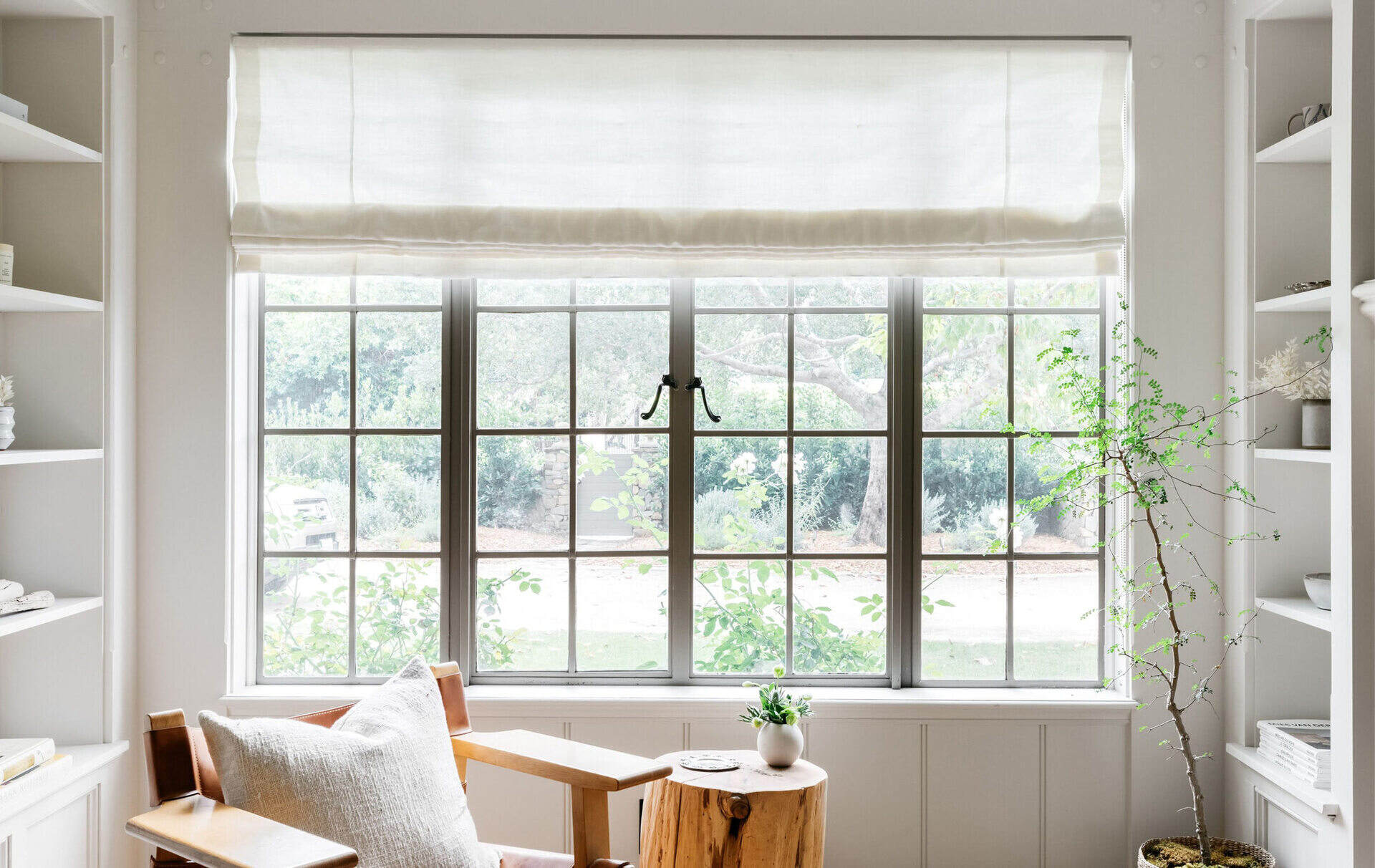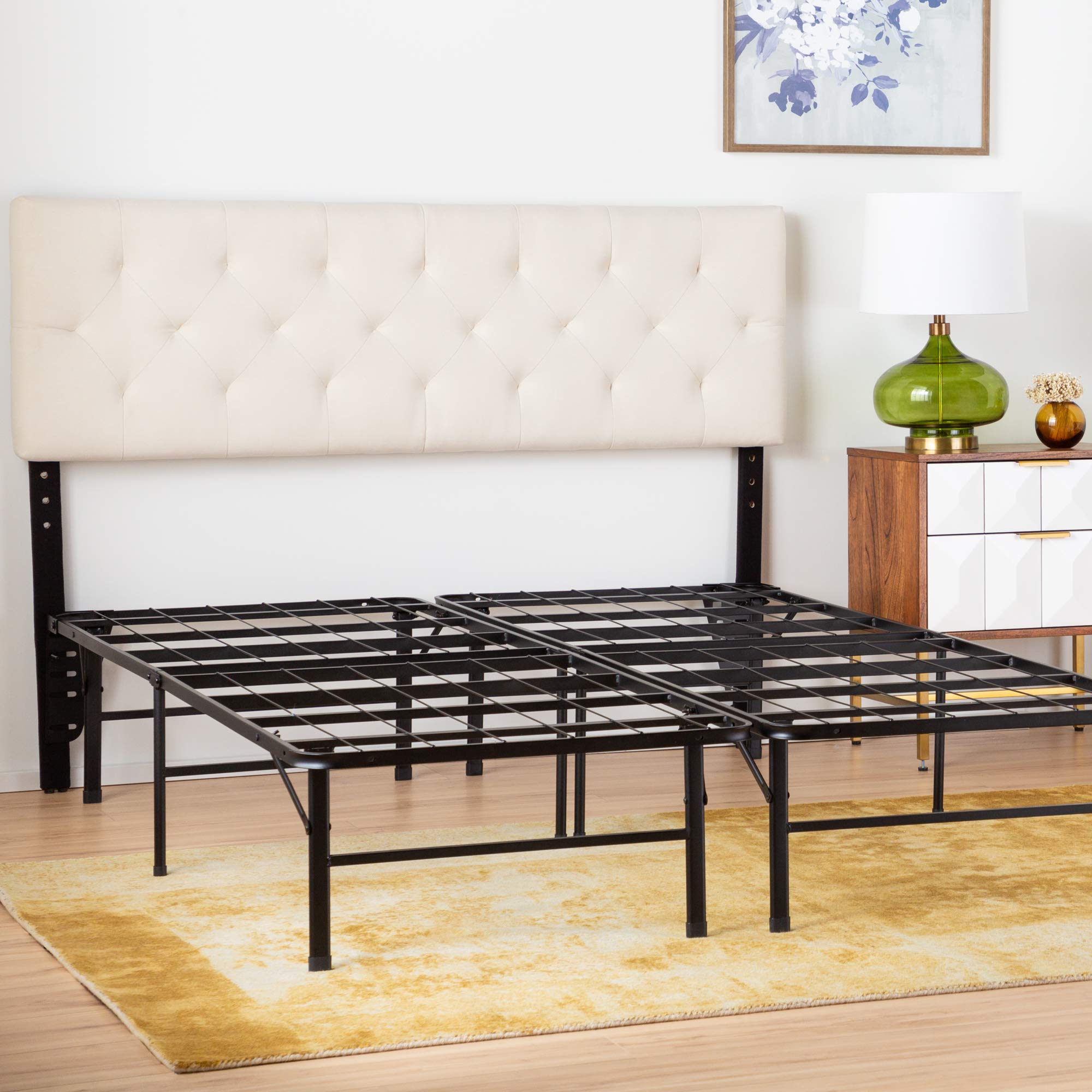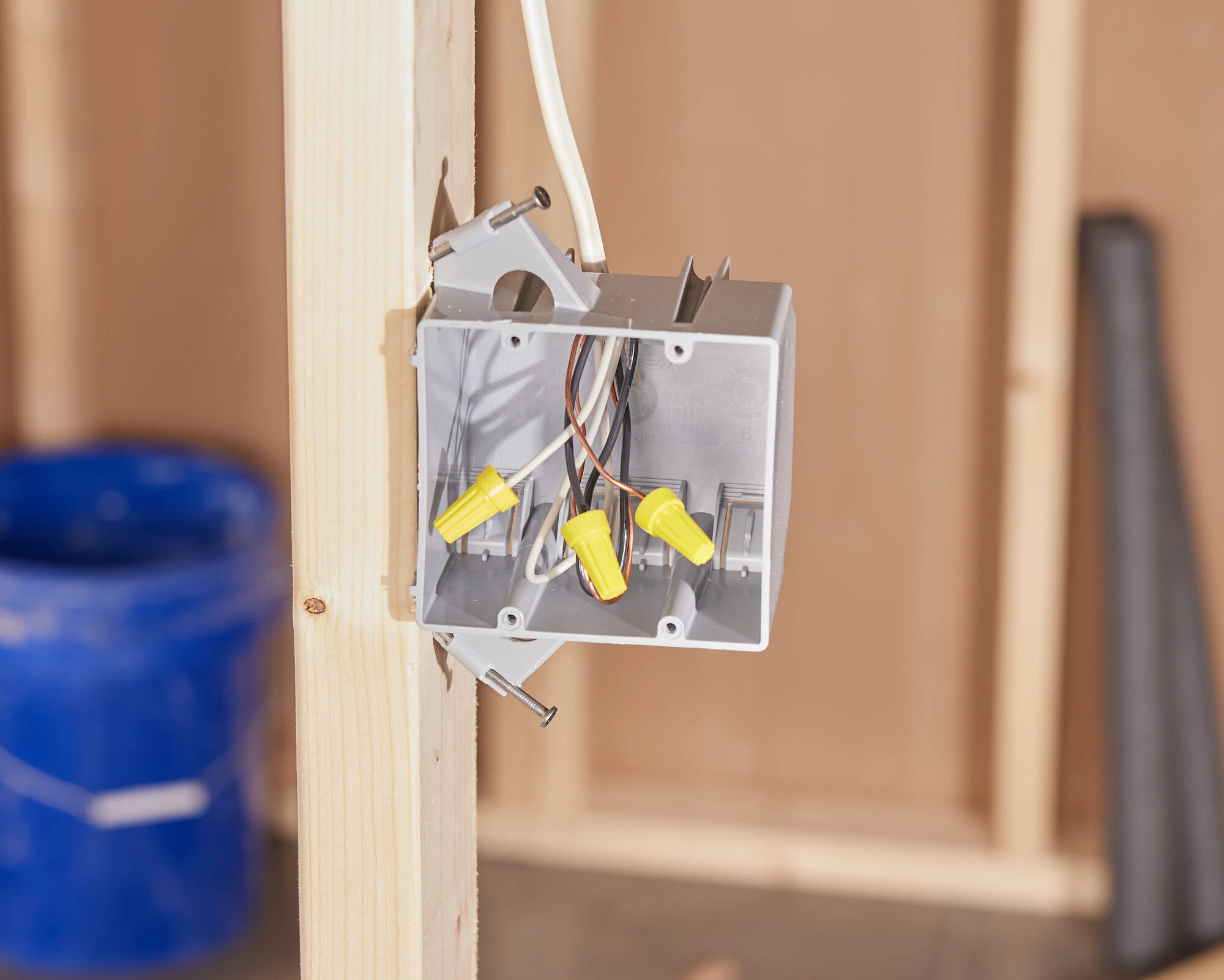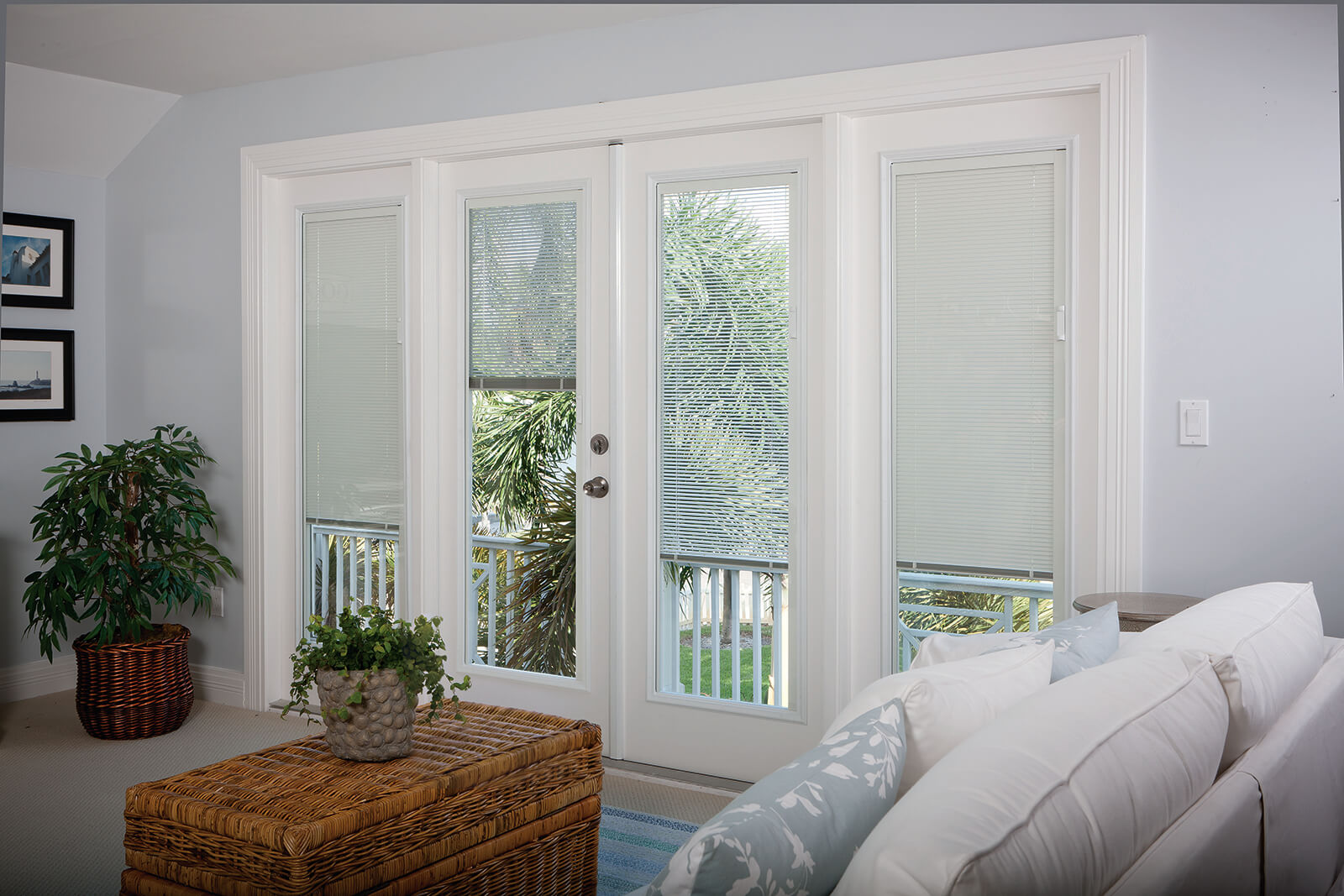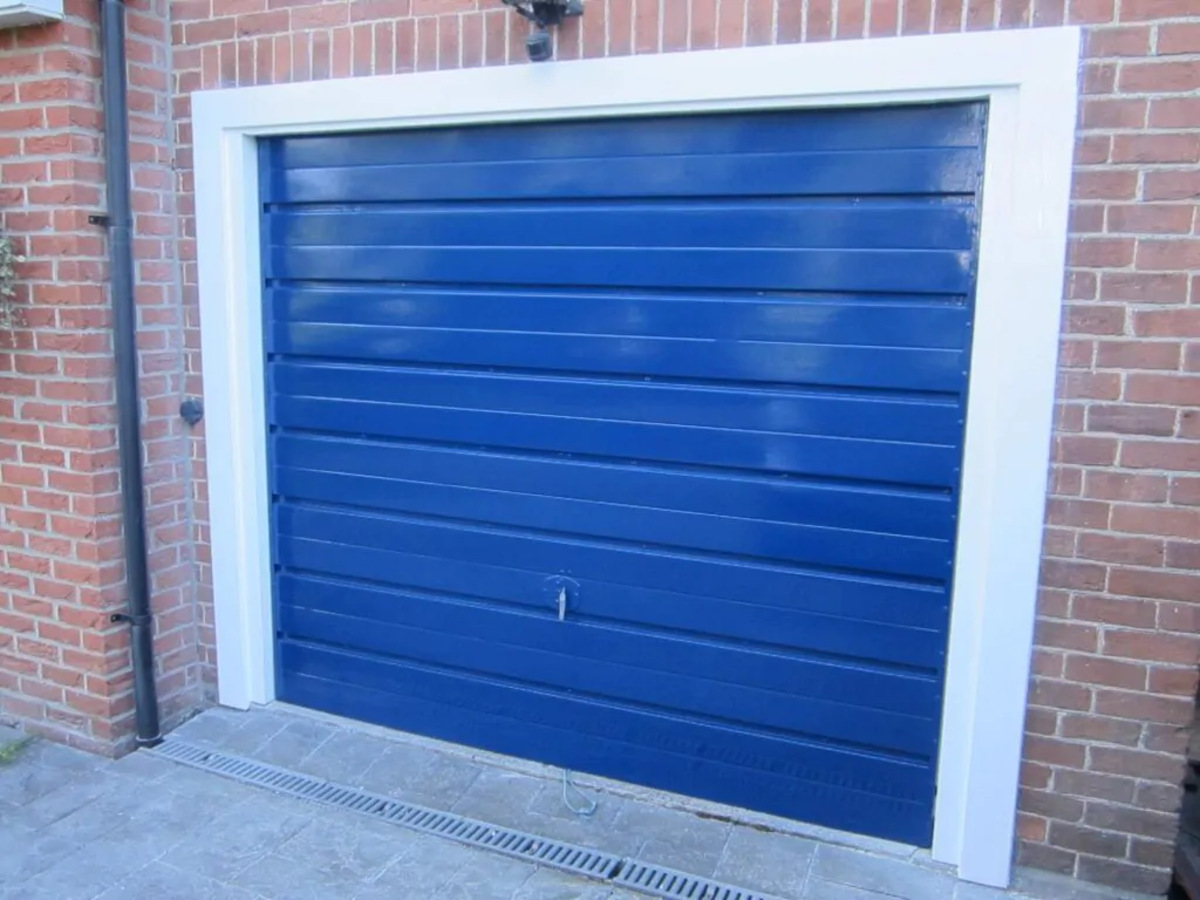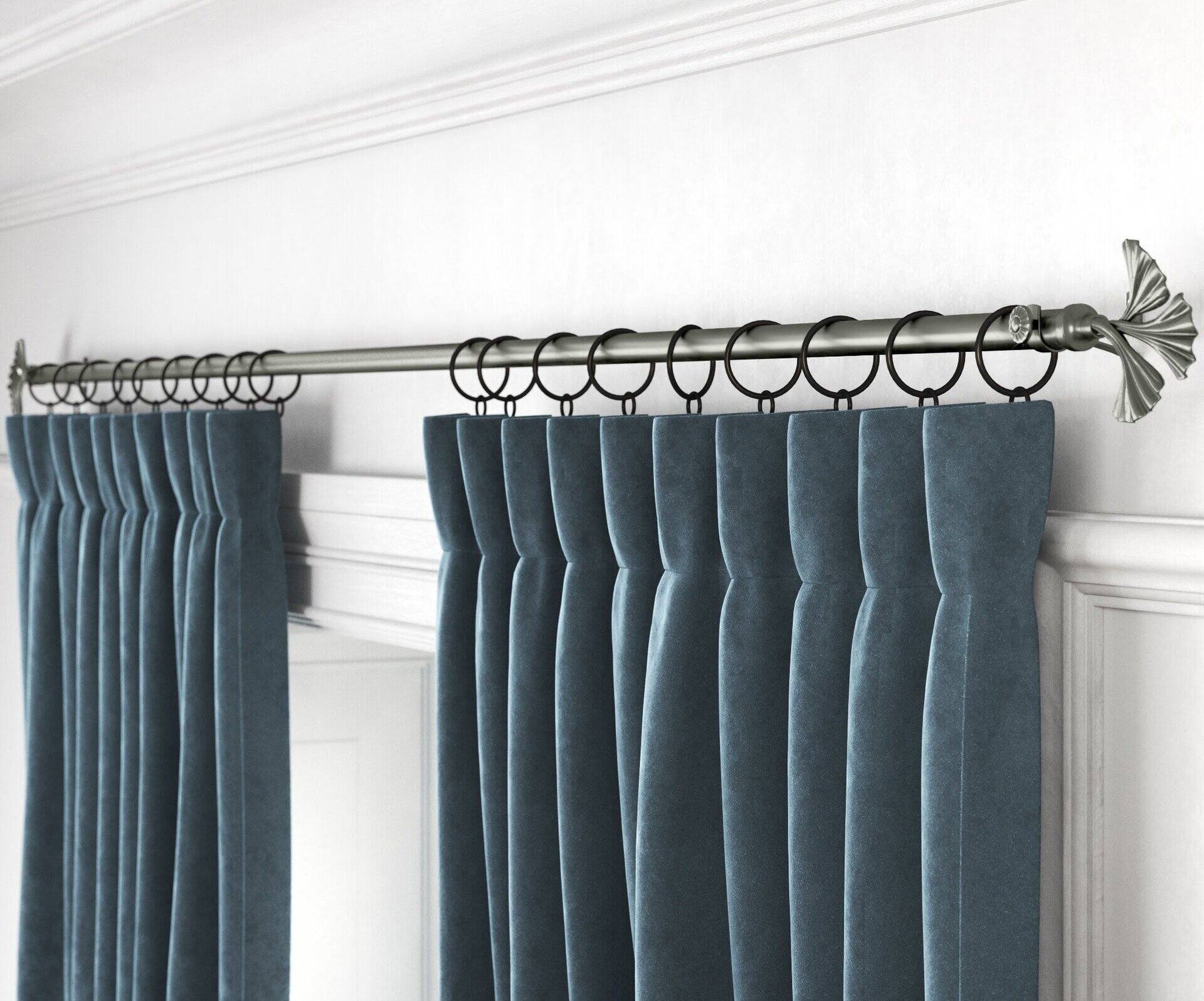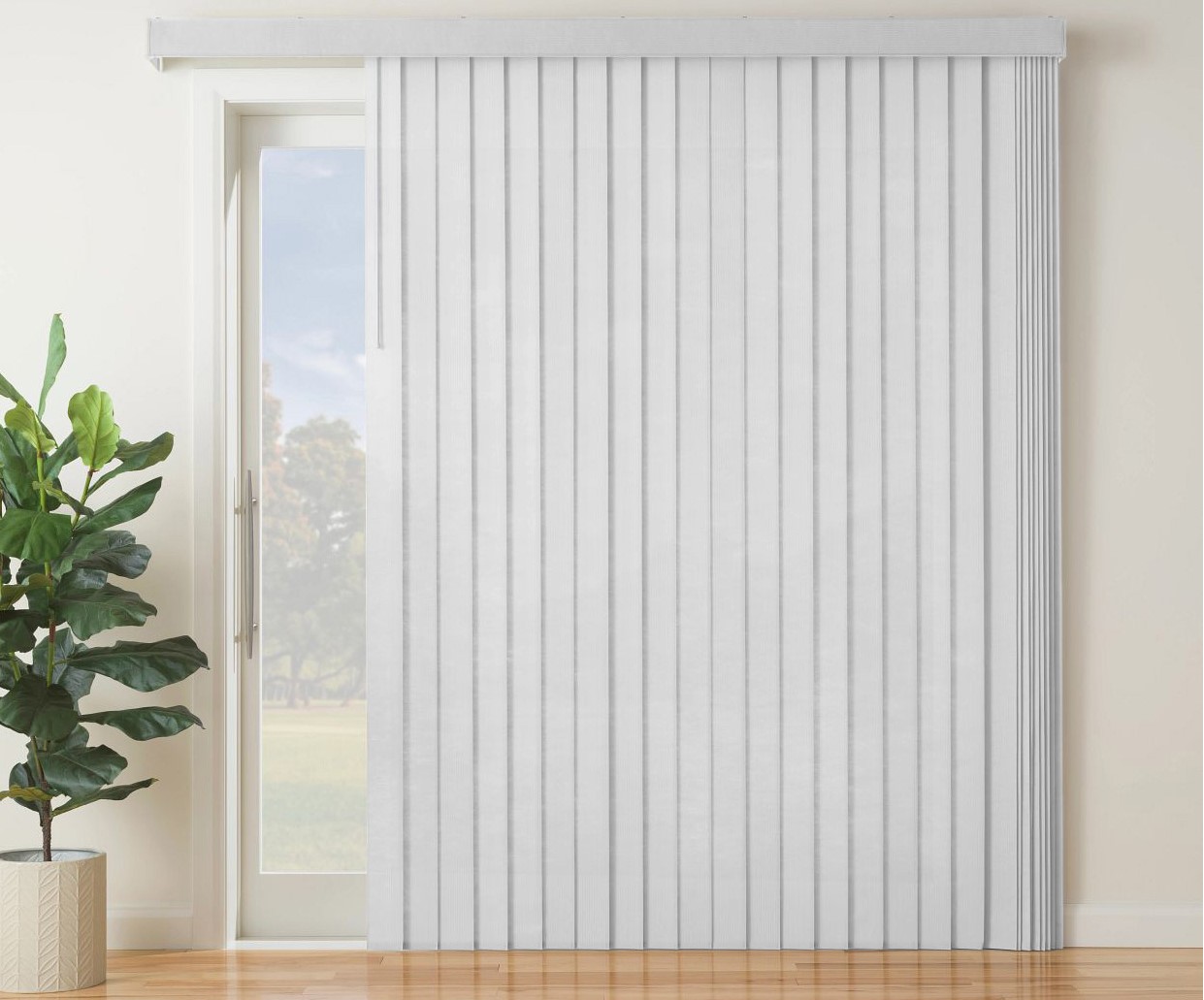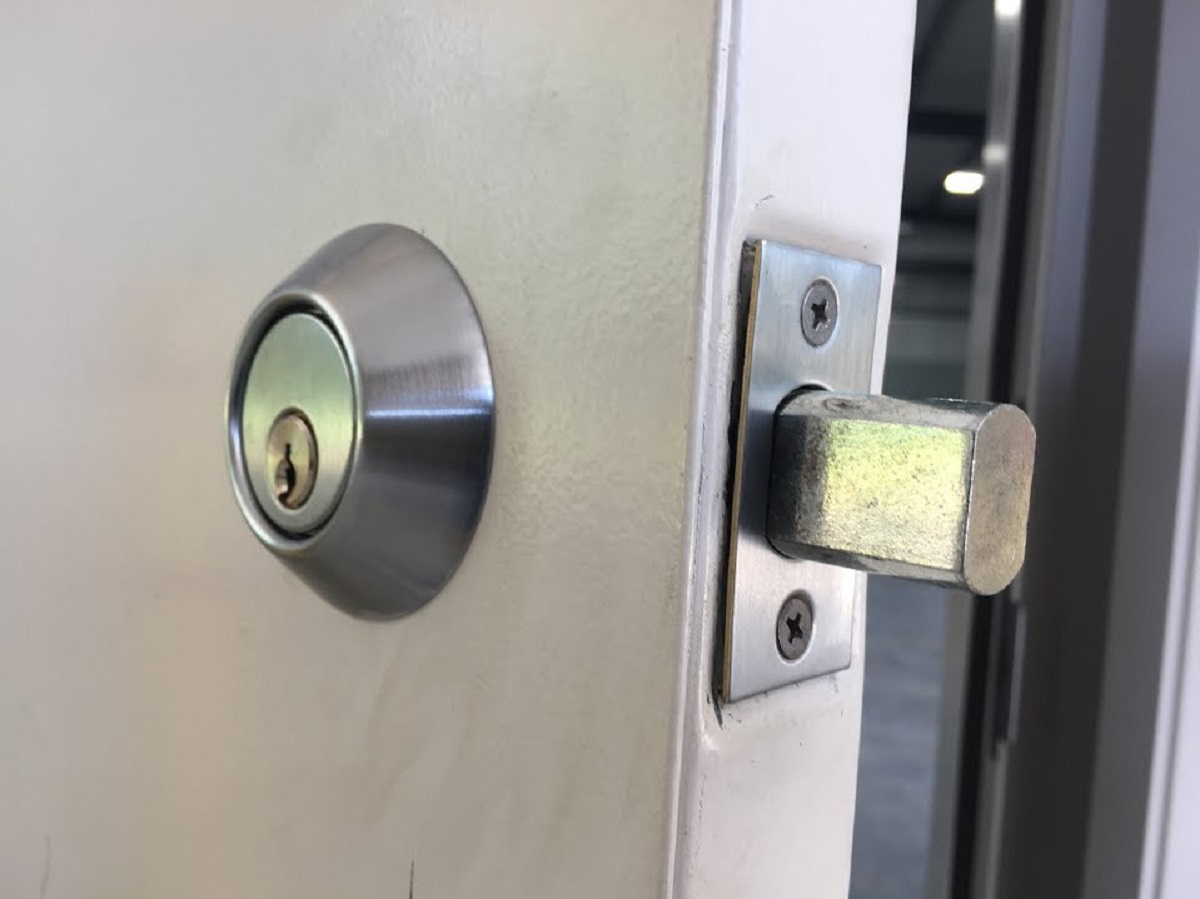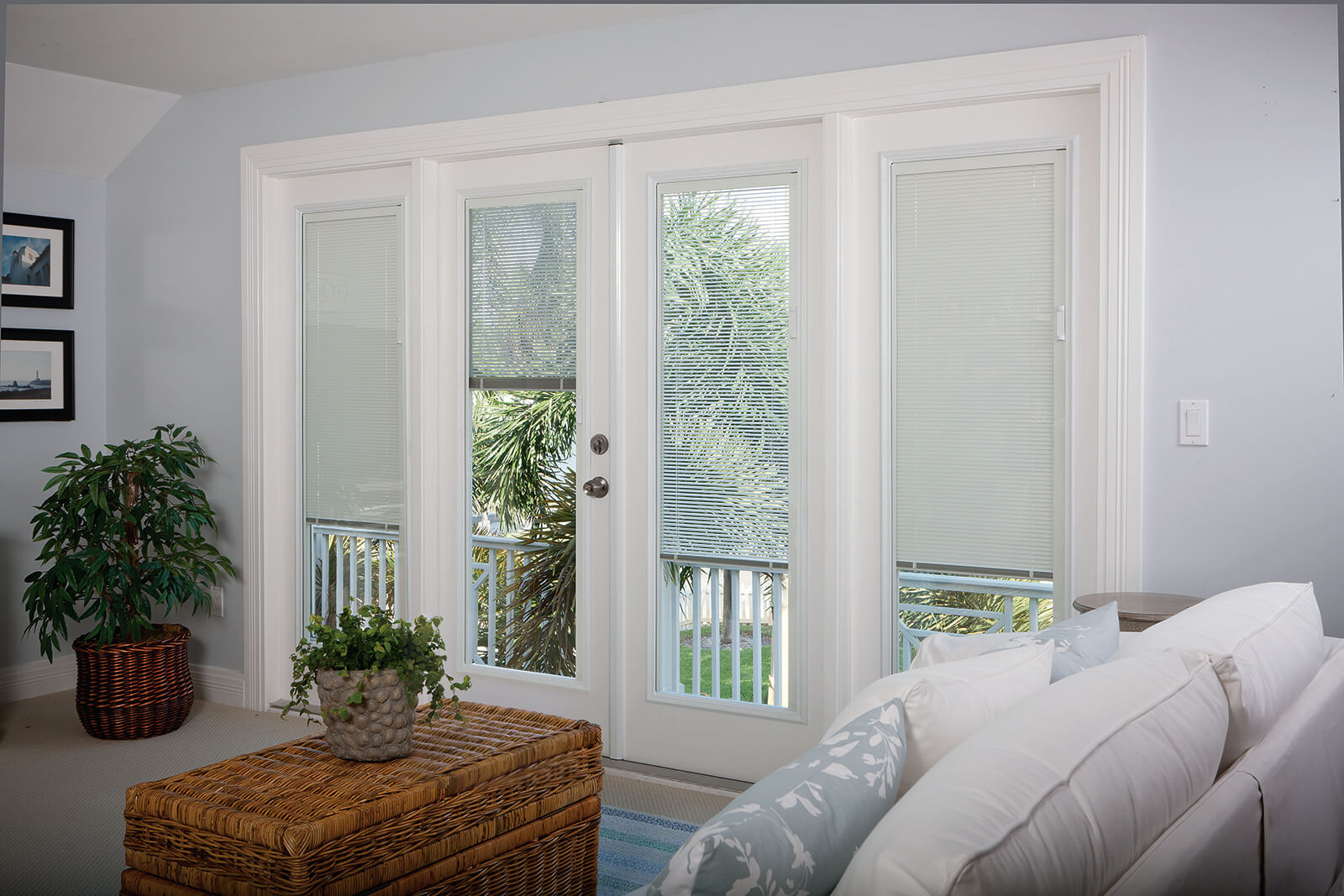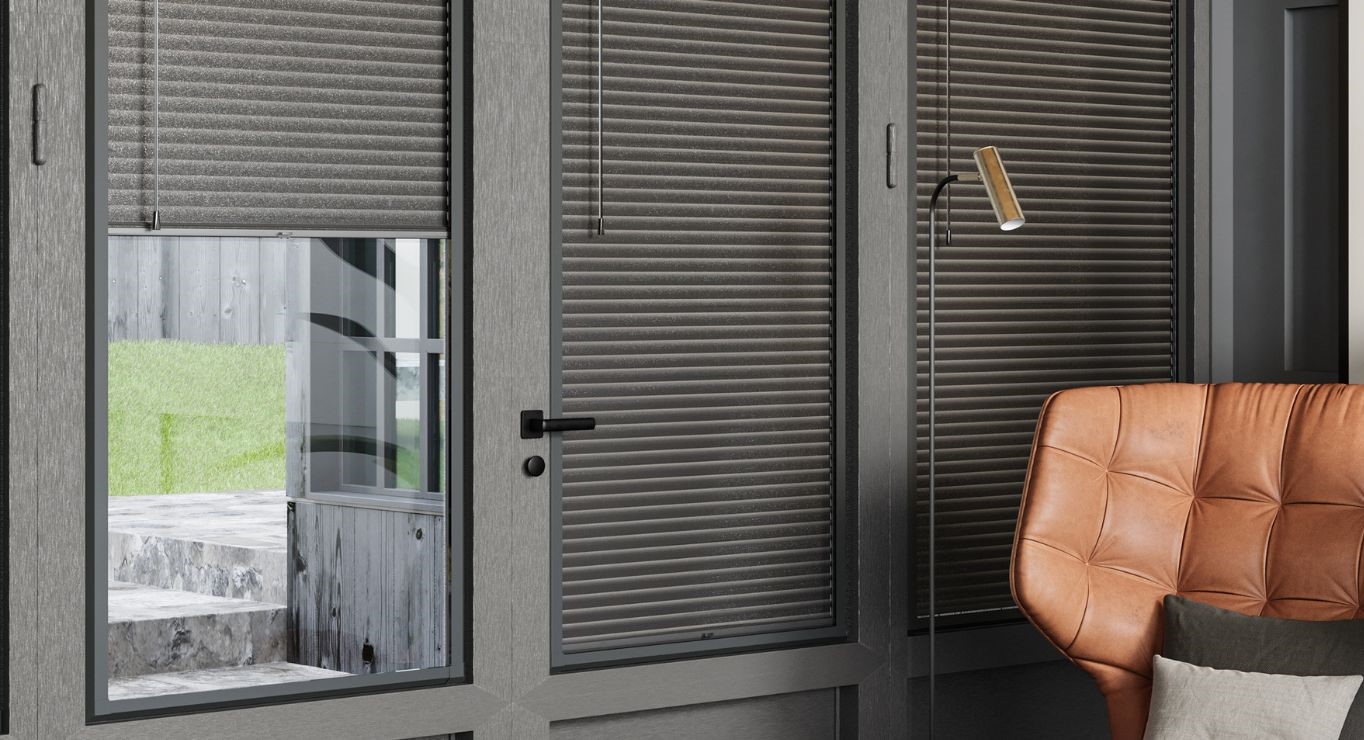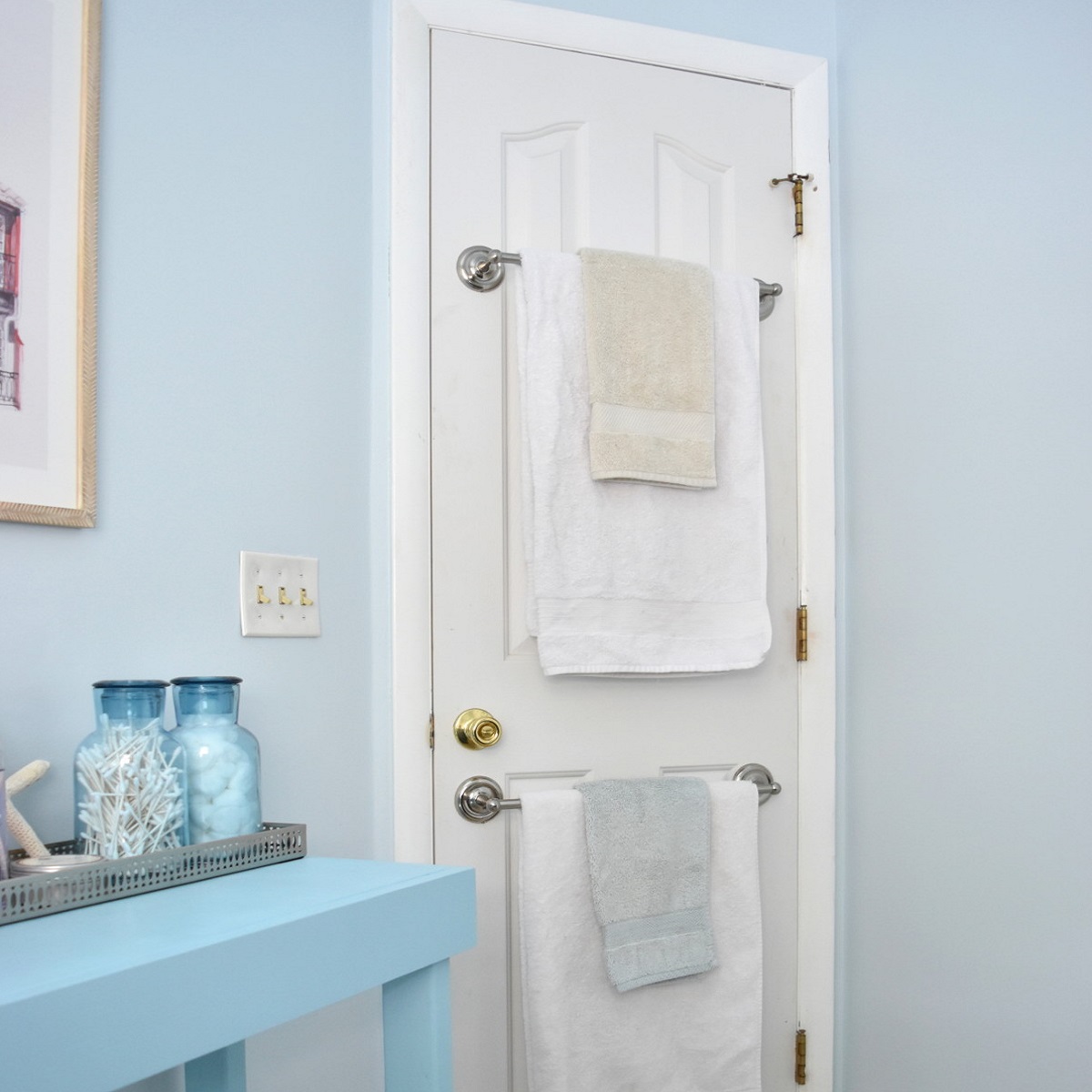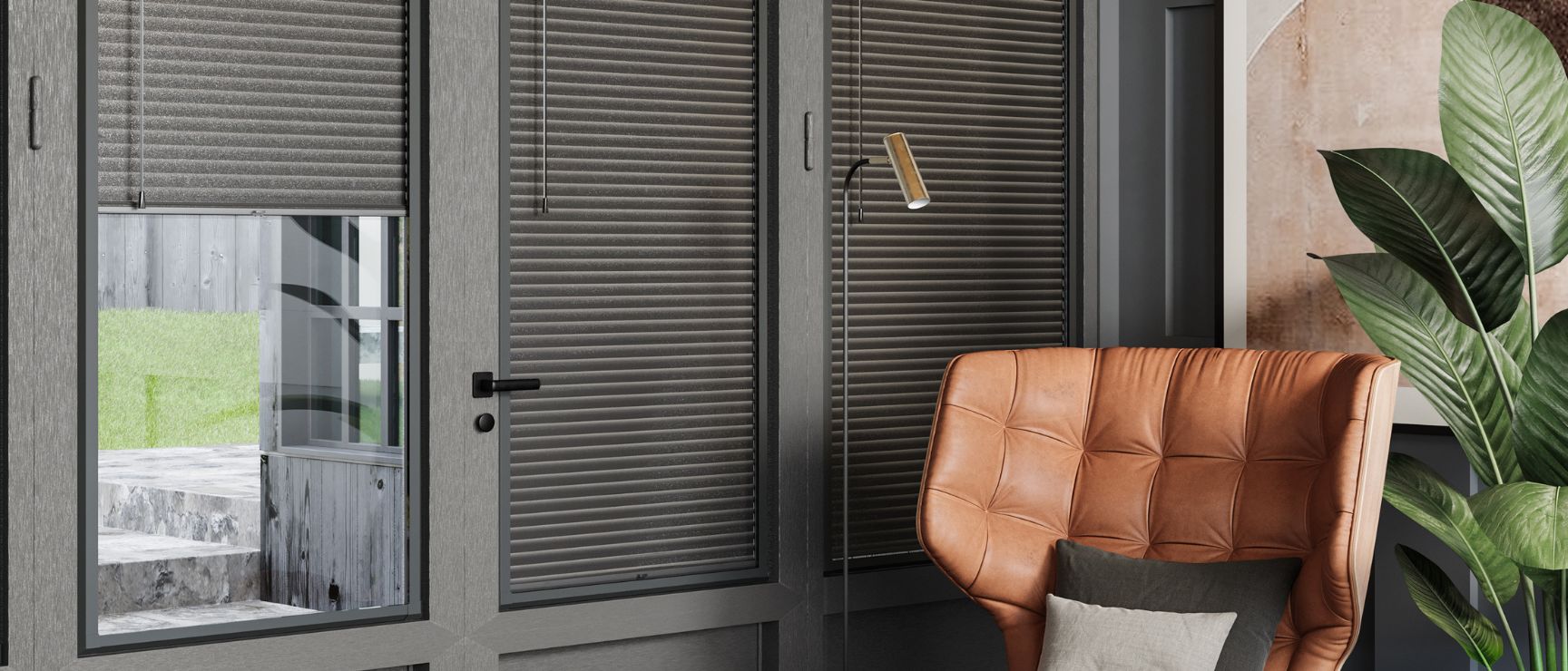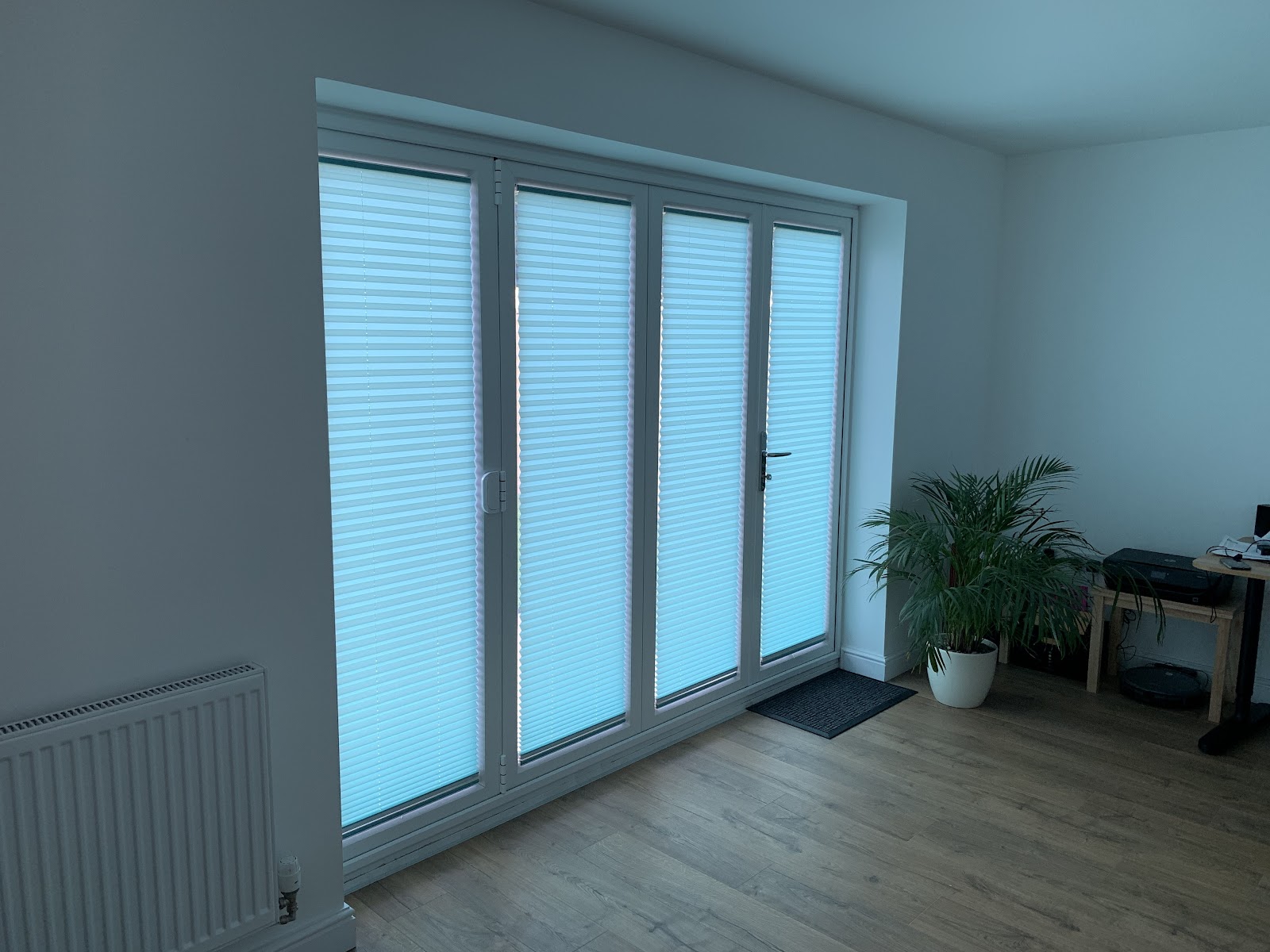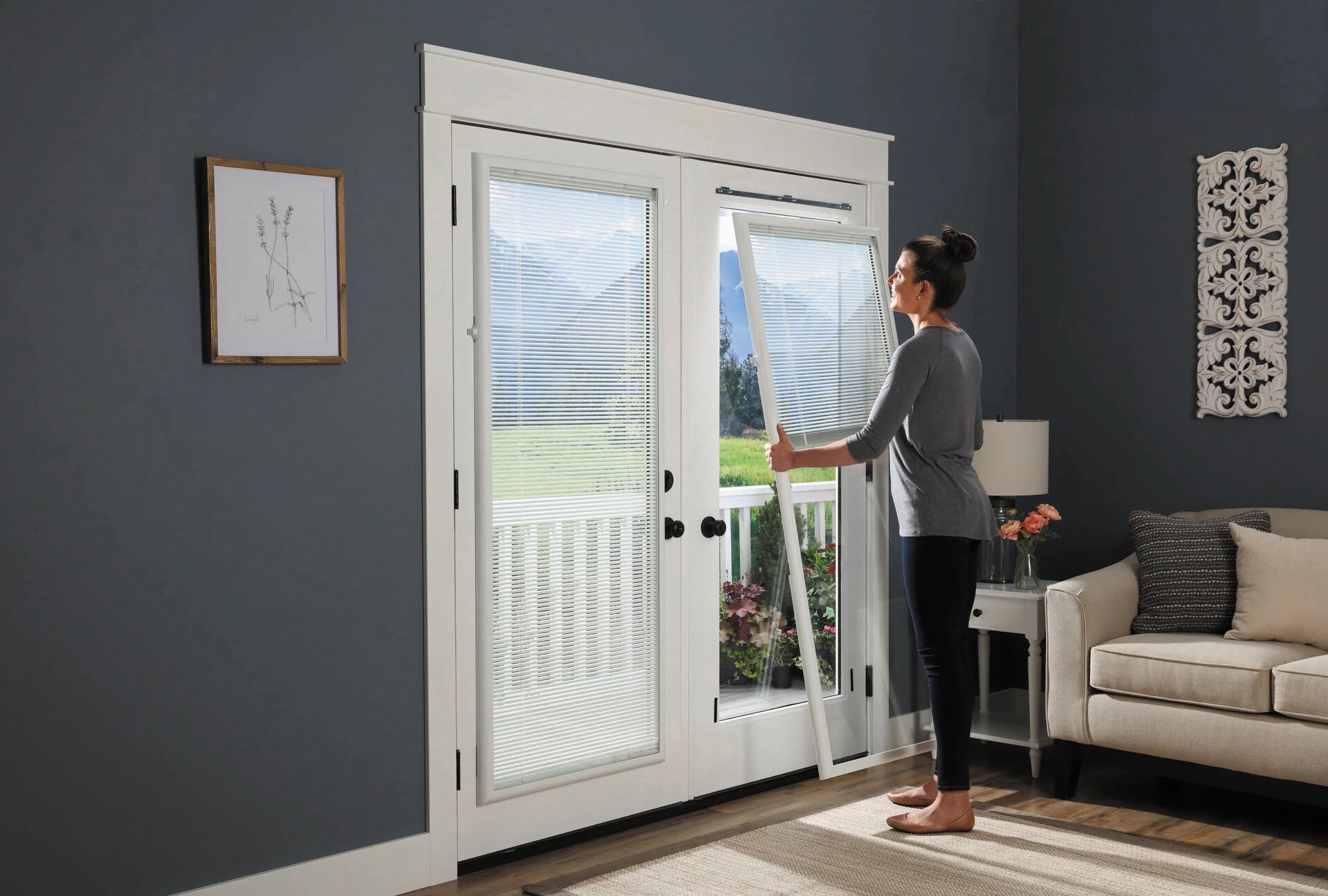

Articles
How To Attach Blinds To A Metal Door
Modified: May 6, 2024
Learn how to attach blinds to a metal door with our informative articles. Find step-by-step instructions and tips for a seamless installation.
(Many of the links in this article redirect to a specific reviewed product. Your purchase of these products through affiliate links helps to generate commission for Storables.com, at no extra cost. Learn more)
Introduction
Installing blinds on a metal door can be a bit tricky, as you can’t simply screw them in like you would on a wooden frame. However, there are various methods you can use to securely attach blinds to a metal door without causing any damage. In this article, we will explore three different methods that you can try to achieve a sturdy and secure installation.
Whether you’re looking for privacy, light control, or just to add a touch of style to your metal door, attaching blinds can provide the perfect solution. Magnetic mounts, adhesive strips, and screw-in brackets are the three main methods we will discuss. Each method has its own unique advantages and considerations, so you can choose the one that best suits your door and preference.
Before we delve into the specific methods, it’s important to note a few general tips and precautions to ensure a successful blind installation. First, it’s crucial to clean the surface of the metal door thoroughly before attaching any blinds. This will ensure that the adhesive or magnets adhere properly and create a strong bond.
Second, using a level is highly recommended to ensure that the blinds are straight and properly aligned. This will not only enhance the aesthetic appeal but also provide a functional installation that operates smoothly.
Lastly, when choosing the attachment method, consider the weight of the blinds. Heavier blinds may require stronger attachments, such as screw-in brackets, to ensure they are securely held in place. Now, let’s dive into the three methods for attaching blinds to a metal door.
Key Takeaways:
- Achieve a secure and stylish blind installation on a metal door using magnetic mounts, adhesive strips, or screw-in brackets. Consider weight, alignment, and cleaning for a successful attachment.
- Enhance functionality and visual appeal by following tips and precautions for attaching blinds to a metal door. Choose the right method and enjoy the benefits of privacy, light control, and aesthetics.
Method 1: Using Magnetic Mounts
Step 1: Determine the placement of the blinds
Before you can attach the blinds, it’s important to decide where you want them to be positioned on the metal door. Consider factors such as privacy, aesthetic appeal, and functionality when determining the ideal placement. Take measurements and mark the desired location using a pencil or masking tape.
Step 2: Attach the magnetic mounts to the metal door
Once you have determined the placement, it’s time to attach the magnetic mounts. Magnetic mounts are a popular choice for attaching blinds to metal doors as they provide a secure hold without the need for drilling or damaging the door surface. Simply place the magnetic mounts on the metal door according to your markings.
Ensure that the magnets are aligned properly, as this will optimize the strength and stability of the attachment. Check the manufacturer’s instructions for any additional guidance or specific requirements for the magnetic mounts you are using.
Step 3: Secure the blinds onto the magnetic mounts
Once the magnetic mounts are in place, you can attach the blinds. Most blinds designed for use with magnetic mounts come with corresponding metal plates that can be easily attached to the top rail of the blinds. These metal plates will magnetically attach to the mounts on the door.
Align the metal plates on the blinds with the magnetic mounts on the door, ensuring a snug fit. The magnets should securely hold the blinds in place, allowing you to adjust and operate them as desired.
It’s important to note that while magnetic mounts provide a convenient and non-permanent solution for attaching blinds to a metal door, they may have limitations in terms of the weight and size of the blinds they can support. Consider the specifications and weight restrictions provided by the manufacturer to ensure that the magnetic mounts are suitable for your blinds.
With the blinds securely attached using magnetic mounts, you can now enjoy the benefits of privacy, light control, and enhanced aesthetics on your metal door.
Method 2: Using Adhesive Strips
Step 1: Measure and mark the desired position for the blinds
Start by measuring and marking the location where you want to install the blinds on the metal door. Use a measuring tape to ensure accuracy. Consider factors such as privacy, light control, and the overall aesthetic appearance when determining the ideal placement.
Step 2: Prepare the adhesive strips
Before attaching the blinds, it’s essential to prepare the adhesive strips. Adhesive strips are a popular choice as they provide a strong and secure hold without the need for drilling or damaging the door. Depending on the type of blinds you have, you may need to cut the adhesive strips to the desired length or shape.
Follow the manufacturer’s instructions for activating the adhesive on the strips. This may involve removing a protective backing or applying pressure to ensure a strong bond. Allow the adhesive to cure for the recommended amount of time before proceeding.
Step 3: Attach the adhesive strips to the metal door
Once the adhesive strips are ready, carefully attach them to the marked positions on the metal door. Press firmly to ensure a secure bond. Make sure to align the adhesive strips properly and verify that they are level before moving on to the next step. Take caution to avoid touching the adhesive surface with bare hands, as oils and residues can compromise the adhesion.
Step 4: Mount the blinds onto the adhesive strips
Now that the adhesive strips are securely attached to the metal door, you can mount the blinds. Depending on the type of blinds you have, they may have pre-installed hooks or brackets that can be easily slid onto the adhesive strips. Make sure the blinds are aligned properly and securely fastened to the adhesive strips.
It’s essential to note that adhesive strips may have weight limitations, so it’s recommended to check the manufacturer’s guidelines to ensure that they can adequately support the weight of your blinds. Additionally, extreme temperature fluctuations can affect the adhesive’s performance, so choose adhesive strips that are suitable for the specific environmental conditions of your metal door.
By following these steps and using adhesive strips, you can now enjoy the functionality and aesthetic appeal of blinds on your metal door.
When attaching blinds to a metal door, use magnetic or adhesive mounting brackets for easy installation without the need for drilling or screws.
Method 3: Using Screw-in Brackets
Step 1: Measure and mark the location for the brackets
Start by measuring and marking the desired location for the brackets on the metal door. Consider factors such as the size of the blinds, the desired height, and the overall aesthetic appearance. Use a measuring tape and a pencil to ensure accuracy in your markings.
Step 2: Pre-drill holes for the bracket screws
Before attaching the brackets, it’s important to pre-drill holes on the marked locations to ensure a secure and stable installation. Choose a drill bit that matches the size of the screws provided with the brackets. Position the drill bit perpendicular to the door surface and drill slowly to create the pilot holes. Take care to avoid drilling through the door completely or damaging its surface.
Step 3: Attach the screw-in brackets to the metal door
Once the pilot holes are created, it’s time to attach the screw-in brackets. Line up the brackets with the pilot holes and use a screwdriver or power drill with the appropriate screwdriver bit to secure the brackets to the metal door. Make sure to screw them in tightly, but be cautious not to overtighten and risk damaging the door.
Ensure that the brackets are level and aligned properly to ensure the blinds will hang straight. Use a level to double-check the alignment and make any necessary adjustments before proceeding.
Step 4: Install the blinds onto the brackets
With the brackets securely attached to the metal door, you can now install the blinds. Depending on the type of blinds you have, they may have hooks, clips, or other attachment mechanisms that can be easily mounted onto the brackets. Gently slide or snap the blinds onto the brackets, ensuring they are properly seated and secure.
Selecting the appropriate screw-in brackets is crucial to ensure that they can support the weight and size of your blinds. Take into account the recommendations and weight limits provided by the manufacturer, and consider the material and construction of the metal door as well.
By following these steps and using screw-in brackets, you can achieve a reliable and durable installation of blinds on your metal door.
Tips and Precautions
When it comes to attaching blinds to a metal door, there are some essential tips and precautions to keep in mind to ensure a successful and hassle-free installation:
Tip 1: Clean the metal door surface before attaching blinds
Before attaching any type of blinds, it’s crucial to clean the surface of the metal door thoroughly. Remove any dirt, dust, or debris using a mild detergent or an appropriate cleaning solution. This will ensure a clean and smooth surface for optimal adhesion or attachment of the blinds. Use a clean cloth or sponge to wipe away any residue and let the door dry completely before proceeding with the installation.
Tip 2: Use a level to ensure blinds are straight and aligned
Proper alignment is key to achieving a professional and visually appealing installation. Use a level to ensure that the blinds are straight and aligned horizontally. This will not only enhance the aesthetics but also ensure smooth operation and functionality. Adjust as necessary before finalizing the attachment method.
Tip 3: Consider the weight of the blinds when choosing the attachment method
Each attachment method has its own weight restrictions and limitations. When selecting the attachment method, consider the weight of the blinds you plan to install. Heavier blinds may require more secure and robust attachment methods, such as screw-in brackets, to ensure they are properly supported and held in place. Always refer to the manufacturer’s guidelines and instructions for recommendations on weight limits and suitability.
Precaution: Be careful not to damage the metal door during installation
Throughout the installation process, take precautions to avoid causing any damage to the metal door. Avoid using excessive force, as it can dent or scratch the surface. When drilling holes or attaching brackets, use moderate pressure and ensure the equipment is properly aligned. If necessary, use protective materials such as masking tape or a block of wood to prevent direct contact between tools and the door surface. Use caution and follow the manufacturer’s instructions to minimize the risk of damage.
By following these tips and taking necessary precautions, you can achieve a successful and secure attachment of blinds to your metal door, enhancing both the functionality and visual appeal of your space.
Read more: How To Attach Insulation To Metal Studs
Conclusion
Attaching blinds to a metal door may seem challenging at first, but with the right methods and techniques, you can achieve a secure and stylish installation. In this article, we explored three popular methods for attaching blinds to a metal door: using magnetic mounts, adhesive strips, and screw-in brackets.
The use of magnetic mounts offers a convenient and non-permanent solution. By determining the placement, attaching the magnetic mounts, and securing the blinds onto them, you can enjoy a sturdy and adjustable blind installation.
Adhesive strips provide a strong and secure attachment without the need for drilling. By measuring, preparing the adhesive strips, attaching them to the metal door, and mounting the blinds, you can achieve an aesthetically pleasing and functional blind installation.
For a more permanent and robust attachment, screw-in brackets offer a reliable solution. By measuring, pre-drilling holes, attaching the brackets, and installing the blinds, you can have peace of mind knowing that your blinds are securely fastened to the metal door.
Throughout the installation process, it’s important to follow some key tips and precautions. Cleaning the metal door surface before attaching blinds, using a level to ensure straight alignment, considering the weight of the blinds when choosing the attachment method, and exercising caution to avoid damaging the metal door are all crucial steps to achieving a successful installation.
Remember, when attaching blinds to a metal door, always refer to the manufacturer’s instructions and recommendations for the specific blinds and attachment method you choose. Consider the weight, size, and material of the blinds, as well as the limitations and specifications provided by the manufacturer.
With the right approach, you can enhance the functionality, privacy, and visual appeal of your metal door by attaching blinds. Whether you choose magnetic mounts, adhesive strips, or screw-in brackets, follow the steps outlined in this article, incorporate the tips and precautions discussed, and enjoy the benefits of stylish and functional blinds on your metal door.
Excited about the idea of hassle-free blind installation on metal doors? Our next read is a must! Discover the latest range of magnetic blinds that promise both style and functionality, perfect for your 2024 home updates. These innovative options ensure quick setup without any need for drilling, making them ideal for renters or temporary spaces. Don't miss out on finding your perfect match in our detailed guide.
Frequently Asked Questions about How To Attach Blinds To A Metal Door
Was this page helpful?
At Storables.com, we guarantee accurate and reliable information. Our content, validated by Expert Board Contributors, is crafted following stringent Editorial Policies. We're committed to providing you with well-researched, expert-backed insights for all your informational needs.
